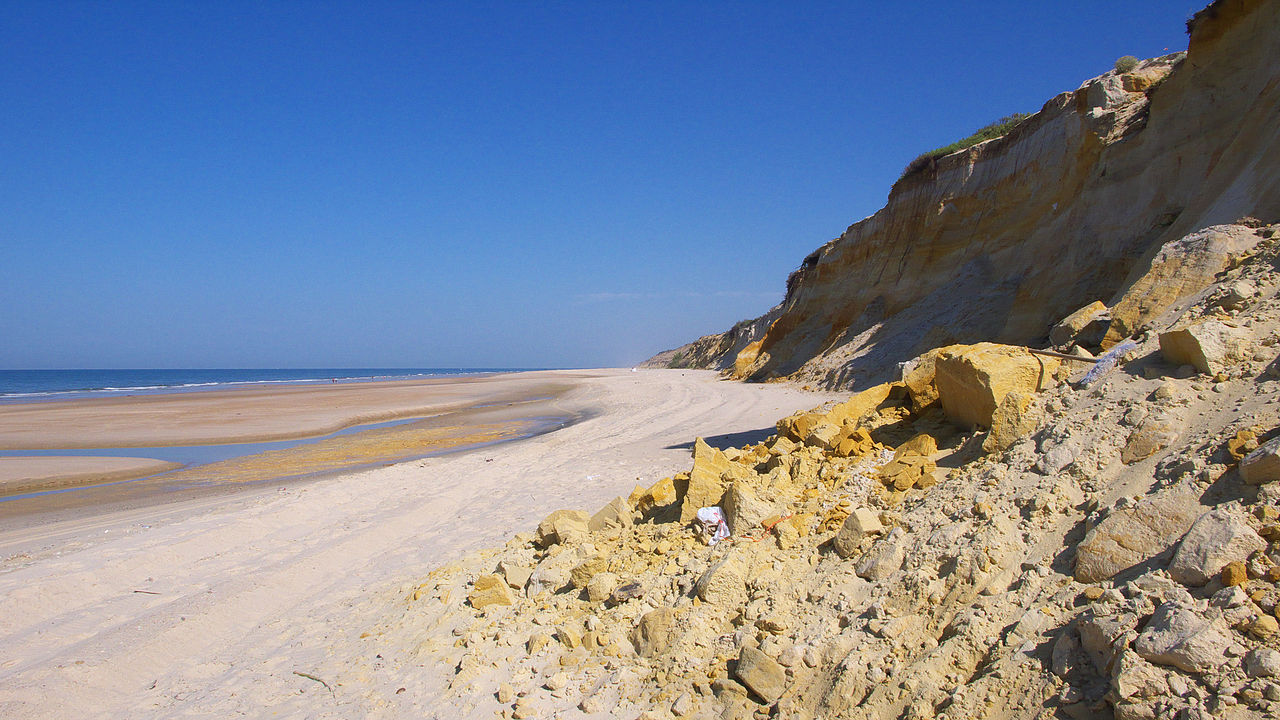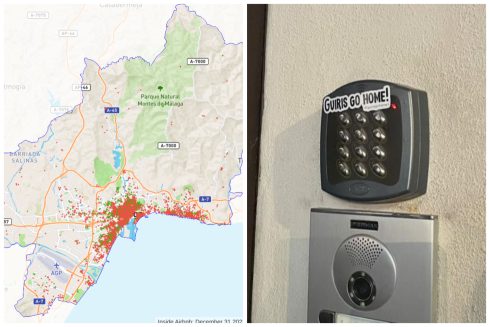HUGE prehistoric footprints uncovered in western Andalucia belong to elephants, researchers have confirmed.
After careful analyses of fossilised footprints discovered along a stretch of the Huelva coastline between Matalascañas and Mazagon, experts have revealed that the site was a nursery for prehistoric elephants some 129,000 years ago.
Based on the rounded–elliptical nature of the tracks, along with other shape features, the team have concluded that the footprints were left by straight-tusked elephants.
Researchers from the University of Lisbon assessed the height, mass and age of the elephants that each of the 34 tracks and believe that the footprints belong to 14 young calves, eight juveniles (aged 2–7), six adolescents (8–15) and five adults.
The prints on the ‘Matalascañas Trampled Surface’ were found close to what would have been a pond and vegetation area, hinting that the site was used by the elephants as a reproductive spot.
“Evidence of a snapshot of social behaviour, especially parental care, can be determined from the concentration of elephant tracks and trackways,” the researchers explained in their paper.
“And especially from apparently contemporaneous converging trackways, of small juvenile and larger — presumably young adult female — tracks.”
Alongside the elephant’s tracks, the team also found the footprints of a Neanderthal.
“This track record across [an ancient soil] surface, although heavily trampled by different animals, including Neanderthals, over a short time frame, permitted an exceptional view into short-term […] interactions,” the researchers wrote.
“It is hypothesized that Neanderthals visited the Matalascañas Trampled Surface for hunting or scavenging on weakened or dead elephants, and more likely calves.”
Biologists from the Doñana National Park accidentally stumbled across one of the largest deposits of prehistoric footprints known in Spain in August last year.
Dolores Cobo and Ana Mateos were walking along a stretch of the Huelva coastline between Matalascañas and Mazagon which is normally covered by sand and debris.
However a change in sea currents and strong winds cleared the rocky outcrop known as the ‘Asperillo’, revealing the impressive fossils for the first time in thousands of years.
The pair immediately understood what they were faced with, and sent photographs to Eduardo Mayoral, professor of paleontology at the University of Huelva.
“This example is certainly unique due to its size, I do not know of another such outcrop in Spain” said Mayoral.

“There is a possibility that these findings are roughly 100,000 years old,” said Mayoral.
He added: “We are pleased that the finding contributes to providing great information on the species that inhabited Doñana many years ago and the habitats that had remained hidden until now.”
The findings also represent an important case for the protection of the site, which is currently under a controversial legal battle between Seprona and the Councillor of Urbanisation in Huelva, Jose Miguel Espina.
Two years ago Espina, along with two businessmen, trekked across the dunes on horseback, causing irreparable damage to the fragile ecosystem of the Asperillo Natural Monument.
READ MORE
Ancient sarcophagus discovered in ‘spectacular’











